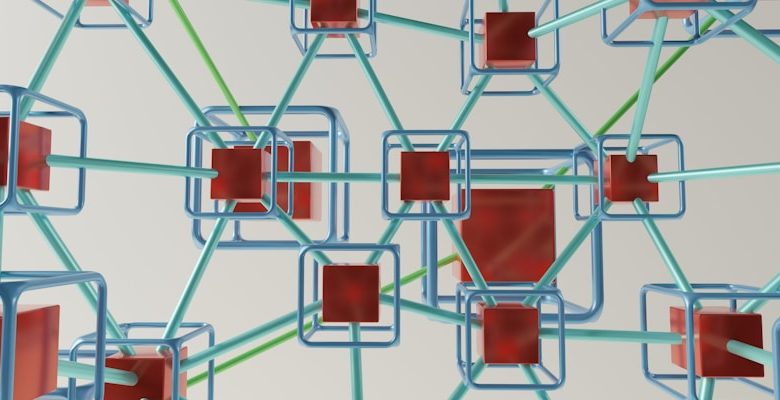The Role of Interoperability in the Future of DeFi

- Understanding the importance of interoperability in DeFi
- Exploring the potential benefits of cross-chain communication
- Challenges and solutions in achieving seamless interoperability
- How interoperability can drive innovation in decentralized finance
- The role of interoperability standards in shaping the future of DeFi
- Case studies showcasing successful interoperability implementations in DeFi
Understanding the importance of interoperability in DeFi
Interoperability is a crucial aspect of the decentralized finance (DeFi) ecosystem. It refers to the ability of different blockchain networks and platforms to communicate and work together seamlessly. In the context of DeFi, interoperability allows users to access a wide range of financial services and products across various protocols and blockchains. This creates a more interconnected and efficient ecosystem where assets can flow freely between different platforms.
The importance of interoperability in DeFi cannot be overstated. By enabling different protocols to interact with each other, interoperability enhances the overall liquidity and accessibility of the DeFi space. This means that users can easily transfer their assets between different platforms without being restricted by the limitations of a single blockchain or protocol. As a result, interoperability helps to create a more open and inclusive financial system that empowers users to take control of their assets and investments.
Moreover, interoperability also fosters innovation within the DeFi space. By allowing developers to build on existing protocols and leverage the capabilities of other blockchains, interoperability encourages the creation of new and innovative financial products and services. This can lead to a more diverse and dynamic DeFi ecosystem that offers users a wider range of options for managing their assets and investments.
Overall, interoperability is a key driver of growth and evolution in the DeFi space. As the industry continues to expand and mature, the ability of different protocols to communicate and collaborate will become increasingly important. By embracing interoperability, the DeFi ecosystem can unlock new opportunities for users, developers, and investors alike, paving the way for a more decentralized and interconnected financial future.
Exploring the potential benefits of cross-chain communication
Exploring the potential benefits of cross-chain communication is crucial in understanding the role of interoperability in the future of DeFi. By enabling different blockchain networks to communicate and share data seamlessly, cross-chain communication opens up a world of possibilities for decentralized finance. One of the key advantages of cross-chain communication is the ability to access a wider range of assets and services across multiple blockchains.
With cross-chain communication, users can leverage a variety of DeFi applications and protocols without being limited to a single blockchain network. This not only enhances the overall user experience but also promotes greater efficiency and liquidity in the DeFi ecosystem. Additionally, cross-chain communication can help reduce transaction costs and improve scalability by enabling interoperability between different blockchain networks.
Furthermore, cross-chain communication can foster collaboration and innovation within the DeFi space by allowing developers to create new and innovative solutions that leverage the strengths of multiple blockchain networks. This can lead to the development of more robust and secure decentralized applications that offer enhanced functionality and usability to users. Overall, exploring the potential benefits of cross-chain communication is essential for unlocking the full potential of DeFi and driving the future of decentralized finance forward.
Challenges and solutions in achieving seamless interoperability
One of the main challenges in achieving seamless interoperability in the realm of decentralized finance (DeFi) is the lack of standardization across different protocols and networks. This lack of uniformity can make it difficult for different platforms to communicate and share information effectively. To address this issue, developers are working on creating common standards and protocols that can be adopted by all participants in the DeFi ecosystem.
Another challenge is the issue of scalability, as the growing popularity of DeFi applications has put a strain on existing networks. This has led to congestion and high transaction fees, which can hinder the seamless flow of assets between different platforms. To overcome this challenge, developers are exploring solutions such as layer 2 scaling solutions and sharding to increase the capacity of networks and improve overall interoperability.
Security is also a major concern when it comes to achieving seamless interoperability in DeFi. With multiple platforms and protocols interacting with each other, there is an increased risk of vulnerabilities and potential exploits. To mitigate these risks, developers are implementing robust security measures such as audits, bug bounties, and formal verification to ensure the safety of assets and data across different networks.
How interoperability can drive innovation in decentralized finance
Interoperability plays a crucial role in driving innovation within the decentralized finance (DeFi) ecosystem. By enabling different blockchain networks and platforms to communicate and interact seamlessly, interoperability opens up a world of possibilities for developers and users alike.
One of the key benefits of interoperability in DeFi is the ability to access a wide range of financial services and products across multiple platforms. This cross-chain compatibility allows users to easily move assets between different networks, access liquidity from various sources, and take advantage of diverse investment opportunities.
Furthermore, interoperability fosters collaboration and partnership among DeFi projects, leading to the creation of new and innovative solutions. Developers can leverage the strengths of different networks to build more robust and efficient applications, ultimately driving progress and pushing the boundaries of what is possible in the DeFi space.
Overall, interoperability serves as a catalyst for growth and advancement in the DeFi industry. By breaking down barriers and facilitating seamless communication between disparate systems, interoperability paves the way for increased efficiency, expanded functionality, and accelerated innovation within the decentralized finance ecosystem.
The role of interoperability standards in shaping the future of DeFi
Interoperability standards play a crucial role in shaping the future of decentralized finance (DeFi). By enabling different blockchain networks to communicate and share data seamlessly, interoperability standards allow for the creation of a more interconnected and efficient DeFi ecosystem.
One of the key benefits of interoperability standards is that they help to reduce barriers to entry for users and developers in the DeFi space. With interoperability, users can easily move assets between different protocols and platforms, making it easier to access a wide range of financial services. This increased accessibility can help drive adoption and growth in the DeFi space.
Moreover, interoperability standards facilitate collaboration and innovation within the DeFi community. Developers can leverage existing standards to build new applications and services that work across multiple blockchains, creating a more robust and interconnected DeFi ecosystem. This cross-chain functionality opens up new possibilities for DeFi projects and allows for greater creativity and experimentation in the space.
Case studies showcasing successful interoperability implementations in DeFi
Below are some case studies that illustrate successful implementations of interoperability in the realm of decentralized finance:
- Case Study 1: A decentralized lending platform integrated with multiple blockchain networks to allow users to borrow and lend assets seamlessly across different chains. This interoperable solution increased liquidity and accessibility for users, leading to a significant uptick in transaction volume.
- Case Study 2: An automated market maker protocol that leveraged cross-chain compatibility to enable users to trade various tokens across disparate networks. By bridging these ecosystems, the protocol facilitated efficient and cost-effective token swaps, attracting a diverse range of traders.
- Case Study 3: A decentralized exchange aggregator that tapped into interoperability to aggregate liquidity from multiple decentralized exchanges on different blockchains. This approach enhanced price discovery and order execution, offering users improved trading experiences and better exchange rates.
These case studies demonstrate the real-world impact of interoperability in decentralized finance, showcasing how seamless connectivity between disparate blockchain networks can drive innovation, efficiency, and user adoption within the DeFi space.



